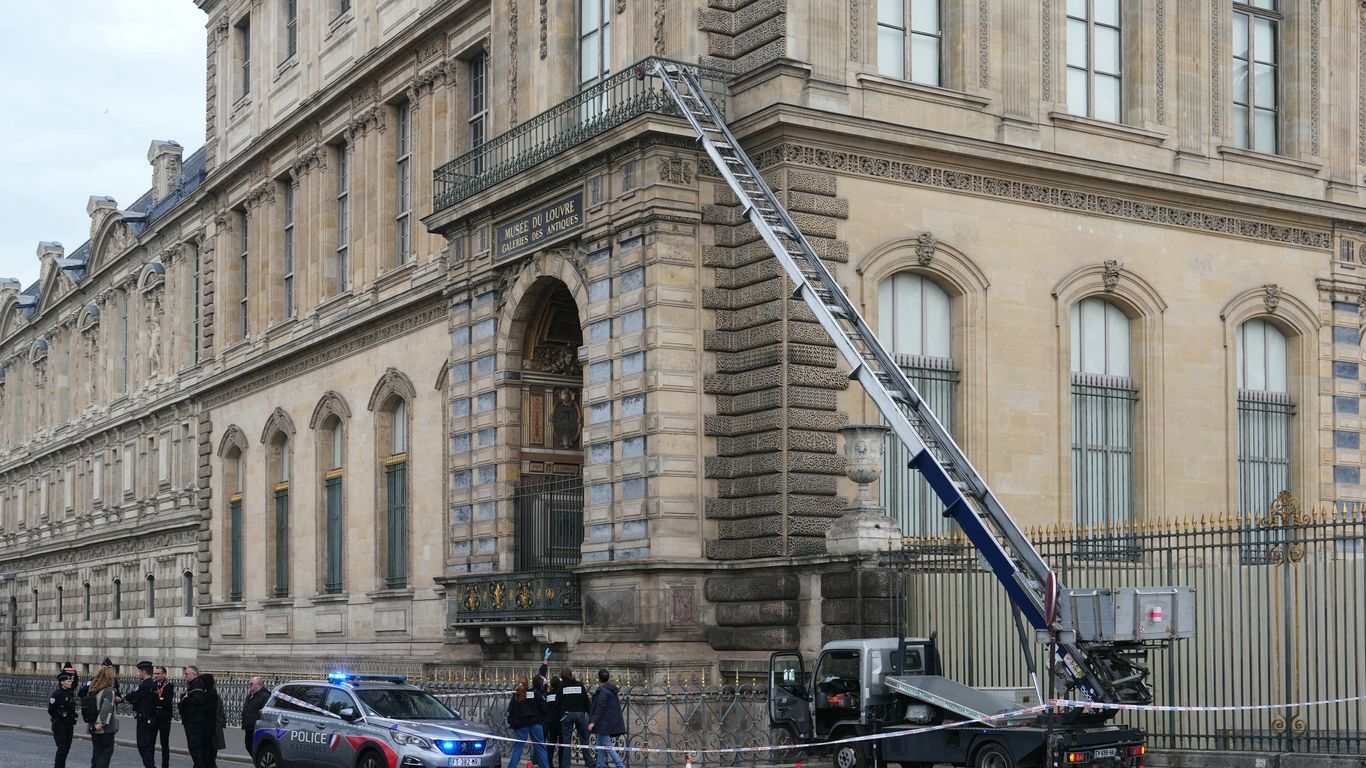
The famous Louvre museum in Paris closed on Sunday after thieves brazenly stole priceless jewels in a daylight robbery.
The big picture: The bandits made off with loot that France’s interior minister described as “priceless,” per a translation, in a heist that lasted just around seven minutes.
Driving the news: Visitors were directed to evacuate the building. There were no injuries, but property of unknown value was stolen from a gallery that holds the French Crown Jewels.
- The Paris prosecutor’s office confirmed in a statement provided to Axios that an investigation has been opened and that the damage is currently being assessed.
Here’s what we know about the break-in and robbery:
When and how did the Louvre heist occur?
The break-in occurred around 9:30 a.m. local time, according to a statement from the Louvre.
- A group of “several” thieves used a lift on a truck to enter through a window into the Galerie d’Apollon, which holds a royal collection of hardstone vessels and the French Crown Jewels, the museum confirmed.
- They took jewelry from display cases before fleeing on motorcycles.
Zoom out: Laurent Nuñez, France’s interior minister, told France Inter radio the robbery appeared to have been conducted by an experienced team of criminals.
- He said investigators believe three or four people were involved and that they used some form of angle grinder to break the window.
What was stolen from the Louvre?
The museum said in a statement provided to Axios that a detailed list of stolen items is being compiled.
- “Beyond their market value, these items have inestimable heritage and historical value,” the museum’s statement said.
The intrigue: In addition to the crown jewels, the room hosts a collection of vessels carved from precious minerals, like jade and amethyst.
- This is not the first high-profile theft at the Louvre. In 1911, Leonardo da Vinci’s world-famous Mona Lisa was snagged by a man who hid inside the museum.
- The painting was missing for two years and returned to the Louvre in January 1914 after the thief, Vincenzo Peruggia, attempted to sell the portrait in December 1913.
Go deeper: Mona Lisa attacked in apparent climate-related protest
Editorial Disclaimer:The news articles published on this website are not owned or created by us directly. We aggregate and publish news content using publicly available news feeds, and each article includes a source credit or link to the original publisher at the bottom of the post.
If any website or content owner finds that their material has been included here and does not wish for their content to appear on our platform, please contact us at [email protected] . Upon receiving your request, we will promptly remove your site from our content feed and database.
We value and respect the rights of all content creators and strive to ensure proper attribution for every piece of content shared.
